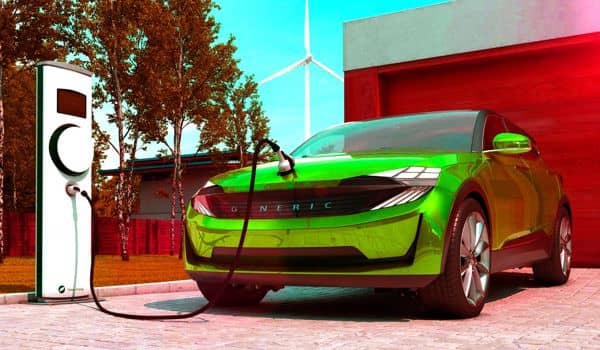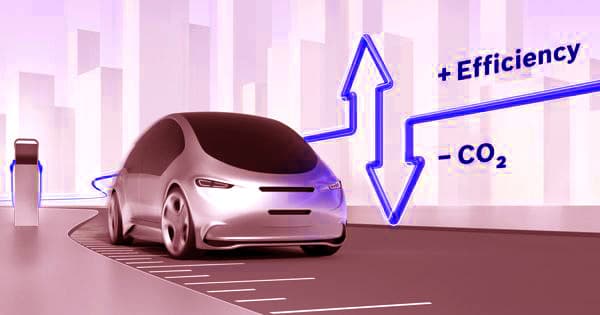An electric car is one that is powered by one or more electric motors that use energy stored in rechargeable batteries to propel the vehicle. Electric vehicles are quieter, have no exhaust emissions, and emit less overall pollution than internal combustion engine (ICE) vehicles.
As the popularity of electric vehicles grows, Europe has begun to increase its capacity to produce batteries on the continent, but it is still a long way from reducing its reliance on Asia. The majority of the world’s electric car batteries are manufactured in China, Japan, and South Korea.
According to Transport & Environment, a non-governmental organization, Europe now has projects to build 38 gigafactories with a combined annual output of 1,000 gigawatt hours (GWh) and an estimated cost of 40 billion euros ($48 billion). This annual supply could be reached by 2029-2030, equivalent to the production of 16.7 million battery electric vehicles, according to a T&E spokesman.
As electric car sales soar, Europe has started to build up its capacity to produce batteries on the continent but it remains far from reducing its dependence on Asia. Europe now has projects to build 38 gigafactories with a combined annual output of 1,000-gigawatt hours (GWh) and an estimated cost of 40 billion euros.
“Given the monstrous increase in demand, there is a significant stake at stake for manufacturers to break the oligopoly of battery makers,” said Eric Kirstetter, a sector analyst at consulting firm Roland Berger. “They will also need to ensure access to materials for the electrodes (anode and cathode), which will determine the price and availability of the batteries,” he adds.
Northvolt, a Swedish start-up, expects to reach annual production of 150 GWh in Europe by 2030, with one plant currently under construction and two much larger ones in the works. Northvolt previously stated that its production capacity would reach 32 GWh by 2024, which would be enough batteries for 600,000 electric vehicles per year.
Several countries have established government incentives such as tax credits, subsidies, and other non-monetary incentives for plug-in electric vehicles. Several countries have mandated the phase-out of fossil-fuel vehicles, and California, one of the largest vehicle markets, has issued an executive order prohibiting the sale of new gasoline-powered vehicles by 2035.

Asian competition
According to another report, Transport & Environment, battery electric vehicles could account for all new unit sales in the 27-nation European Union by 2035 if policymakers implement stricter CO2 targets and strong support for charging infrastructure.
Automobile manufacturers, under pressure to transition away from fossil-fuel vehicles, are investing in battery production. Volkswagen, the German automaker, has invested in Northvolt and plans to build five additional battery plants. Stellaris, which owns Alfa Romeo, Chrysler, Citroen, Dodge, and Fiat, is developing two of its own, while electric pioneer Tesla wants to build one of the world’s largest gigafactories near Berlin, with 250 GWh of capacity by 2030.
European governments are supporting the projects because they want Europe to continue to play a significant role in future automobile manufacturing. Asian manufacturers are also investing in Europe, with the Chinese conglomerate AESC planning to collaborate with Toyota and Renault on battery plants in the United Kingdom and France, respectively. LG Chem and SKI of South Korea have already established factories in Poland and Hungary, respectively, and China’s CATL is constructing one in Germany.
Less polluting
Maros Sefcovic, vice president of the European Commission, stated in March that the continent needed to achieve strategic independence in what has become a critical sector. He wants European factories to meet the needs of the region by 2025. According to Oliver Montique, an analyst with Fitch Solutions, that is a tall order.
Montique aims to establish “an entirely closed-loop supply chain where the vast majority of battery materials are extracted, refined, processed, and produced into battery cells on the continent” by 2040.
Europe wants to build factories that emit less pollution than those in Asia or the United States, and EU officials are developing a standard that would impose criteria on how raw materials are obtained and used batteries are recycled.
The European Commission launched a research and development program in January backed by 2.9 billion euros to develop a new generation of batteries that are less reliant on lithium-ion technology dominated by Asian companies. According to the commission, European factories could employ 800,000 people, but they would need to be trained quickly.
Raw materials will also be required by battery factories. The European Commission predicts that demand for lithium will increase by a factor of 18 by 2030 and that the sector will require five times more cobalt. Although Germany and the Czech Republic have significant lithium reserves, Montique advises EU leaders to ensure supplies from reliable partners as well.
“I’m thinking of Australia, Canada, Brazil, and Chile,” he explained, “so that the supply-side is unlikely to be threatened by normal commercial constraints and/or political reasons.”
















